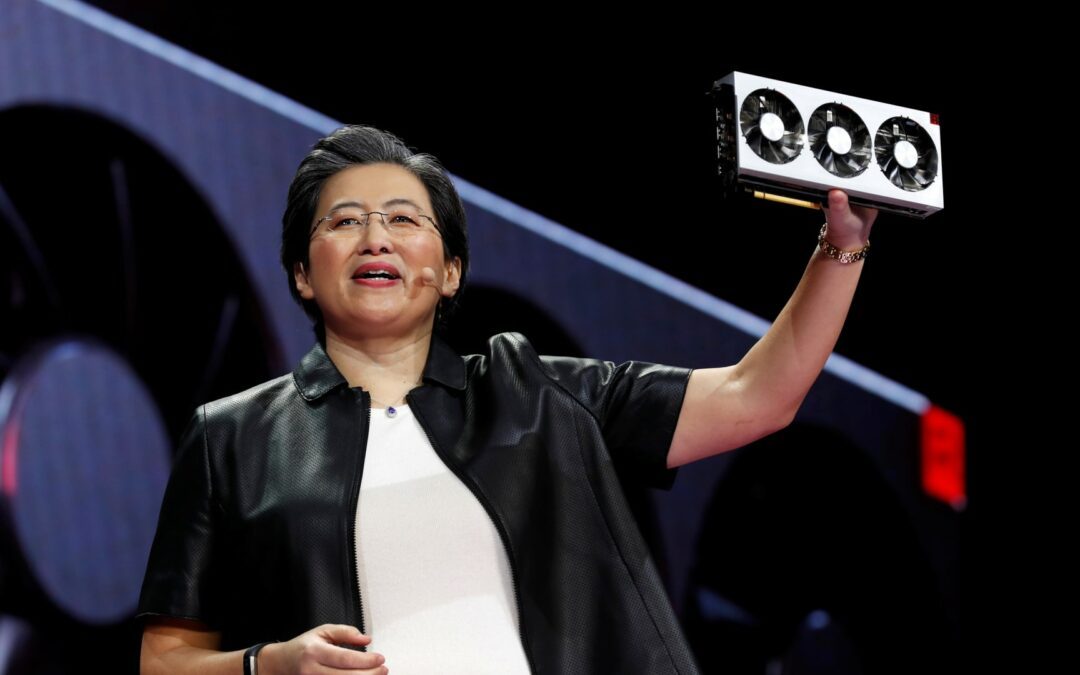Lisa Su, president and CEO of AMD, talks about the AMD EPYC processor during a keynote address at the 2019 CES in Las Vegas, Nevada, U.S., January 9, 2019.
Steve Marcus | Reuters
Advanced Micro Devices reported first-quarter earnings and sales on Tuesday that were slightly ahead of Wall Street expectations, and provided an in-line forecast for the current quarter.
Shares dropped 7% in extended trading.
Here’s how it did versus LSEG consensus expectations for the quarter ended in March:
- Earnings per share: 62 cents adjusted versus 61 cents expected
- Revenue: $5.47 billion vs. $5.46 billion expected.
AMD said it expects about $5.7 billion in sales in the current quarter, in line with Wall Street estimates of the same approximate total. That would represent about 6% annual growth.
The company reported net income of $123 million, or 7 cents per share, versus a net loss of $139 million, or 9 cents per share, during the year-earlier period. Revenue was up about 2% from a year earlier.
AMD shares have risen 14% in 2024, so despite meeting forecast estimates and signaling growth in AI chip sales, Tuesday’s results were not enough to prevent the stock from sliding.
The chipmaker said its closely watched Data Center segment grew 80% year-over-year to $2.3 billion thanks to sales of its MI300 series AI chips, which compete with Nvidia’s graphics processing units.
CEO Lisa Su said Microsoft, Meta, and Oracle use AMD’s MI300X. AMD said it had sold over $1 billion of the chips since it launched in the fourth quarter of 2023.
AMD expects $4 billion in 2024 AI chip sales, up from a $3.5 billion forecast in January. For comparison, Nvidia, the biggest vendor of AI server chips, reported $18.4 billion in sales — mostly AI chips — in its data center segment alone for the January quarter, the most recent for which financial results are available.
Su told investors on Tuesday that the company was working on new AI chips and successors to the current generation. “We’re getting much closer to our top AI customers. They’re actually giving us significant feedback on the road map,” Su said.
AMD also makes central processors that are often paired with advanced AI chips in servers. Su told analysts on a call that the company believed it had taken market share in the server CPU segment — likely from Intel. Su said that AMD sees “signs of improving demand” for its CPUs due to the AI server boom.
AMD’s weakest division was its gaming segment, which was down 48% year over year to $922 million, which the company said was due to lower chip sales for game consoles and PCs. AMD makes chips for Sony’s PlayStation 5, for example. AMD’s gaming sales trailed a StreetAccount estimate of $969 million.
AMD’s original business, processors for chips and PCs, is reported as client segment revenue. AMD reported $1.4 billion in first-quarter sales, an 85% annual increase, suggesting that last year’s PC slump is over. AMD’s PC processors can run artificial intelligence programs locally, which would allow it to power so-called “AI PCs” that many industry participants are banking on to drive new laptop and desktop sales.
The company’s embedded segment, made up of products acquired as part of the Xilinx acquisition in 2022, reported falling sales, dropping 46% year over year to $846 million, lagging Wall Street expectations of $942 million.







